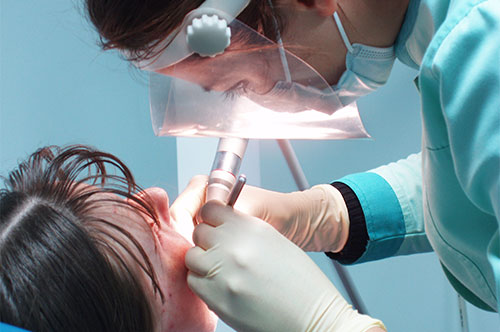As the population ages, we tend to see more cases of osteoporosis and decreased bone density. Both men and women are at risk of developing this condition, making them more susceptible to fractures from everyday activity. It is possible for someone suffering from osteoporosis to break their hipbones in such a way that compromises internal organs and can lead to death. Any bone that breaks from the application of force presents a challenge to the patient, especially in an individual who enjoys an increased lifespan.
Men and women enjoy their maximum bone density in their twenties and early thirties, after which it can all go downhill. Weight-bearing exercises, proper nutrition, and medications have helped us battle the inevitable ravages of aging. The genetic factors are beyond our control at this point, but maintaining a good dentition is a big part of fighting the battle against osteoporosis.
Some bone cells build up bones (osteoblasts), while others remove old bone (osteoclasts), and the dynamic actions of both cells promote bone health. The slowing down of the bone-building process initially leads to osteopenia and then osteoporosis.
How Osteoporosis Affects Oral Health
Early loss of bones in the jaws is initially caused by losing teeth, usually followed by wearing dentures. Teeth and implants provide weight-bearing stimulus to the jawbone and enhance bone deposition where it is most needed. Early bone loss associated with the loss of teeth is not osteoporosis, but it can coincide with osteoporosis.
Regular dental care allows us to preserve teeth and bone, which helps with our nutrition. In the event of a health issue like osteoporosis, better oral health means we have fewer complications. Women seem to be at a higher risk for osteoporosis because they live longer, have more hormonal variations to contend with, and traditionally are involved in fewer weight-bearing exercises.
Treatments for Osteoporosis
Medications like Boniva, Fosamax, Reclast, and hormonal and nutritional supplements, have been used to combat osteoporosis. Complications exist with all therapy forms, but the dentist’s particular interest is complications from bisphosphonates-related Osteonecrosis of the jawbones (BRONJ).
Risk factors for BRONJ include ulcerations under dentures, infections from periodontal disease or cavities, and trauma. Eliminating these risk factors decreases the likelihood of developing BRONJ. The incidence of jawbone necrosis increases if a patient has received IV bisphosphonates and later develops infections in the jawbone area that incorporated the bisphosphonates (studies suggest lower incidences with oral bisphosphonates).
Trauma or surgery affecting the jawbone’s drug enriched areas can also start the breakdown of bone that leads to BRONJ. Some patients have ended up losing parts of their jaws while trying to increase their bone density with bisphosphonates because of oral infections.
Patients receiving osteopenia or osteoporosis treatment should make sure they have all dental work taken care of before taking bisphosphonates.
Once you start therapy, it may be too late to do primary dental treatment or prevent the adverse effects of infected teeth or gums on your supporting alveolar bone.

